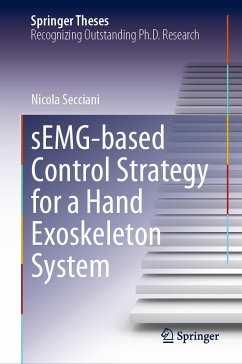This book reports on the design and testing of an sEMG-based control strategy for a fully-wearable low-cost hand exoskeleton. It describes in detail the modifications carried out to the electronics of a previous prototype, covering in turn the implementation of an innovative sEMG classifier for predicting the wearer's motor intention and driving the exoskeleton accordingly. While similar classifier have been widely used for motor intention prediction, their application to wearable device control has been neglected so far. Thus, this book fills a gap in the literature providing readers with extensive information and a source of inspiration for the future design and control of medical and assistive devices.
Dieser Download kann aus rechtlichen Gründen nur mit Rechnungsadresse in A, B, BG, CY, CZ, D, DK, EW, E, FIN, F, GR, HR, H, IRL, I, LT, L, LR, M, NL, PL, P, R, S, SLO, SK ausgeliefert werden.









